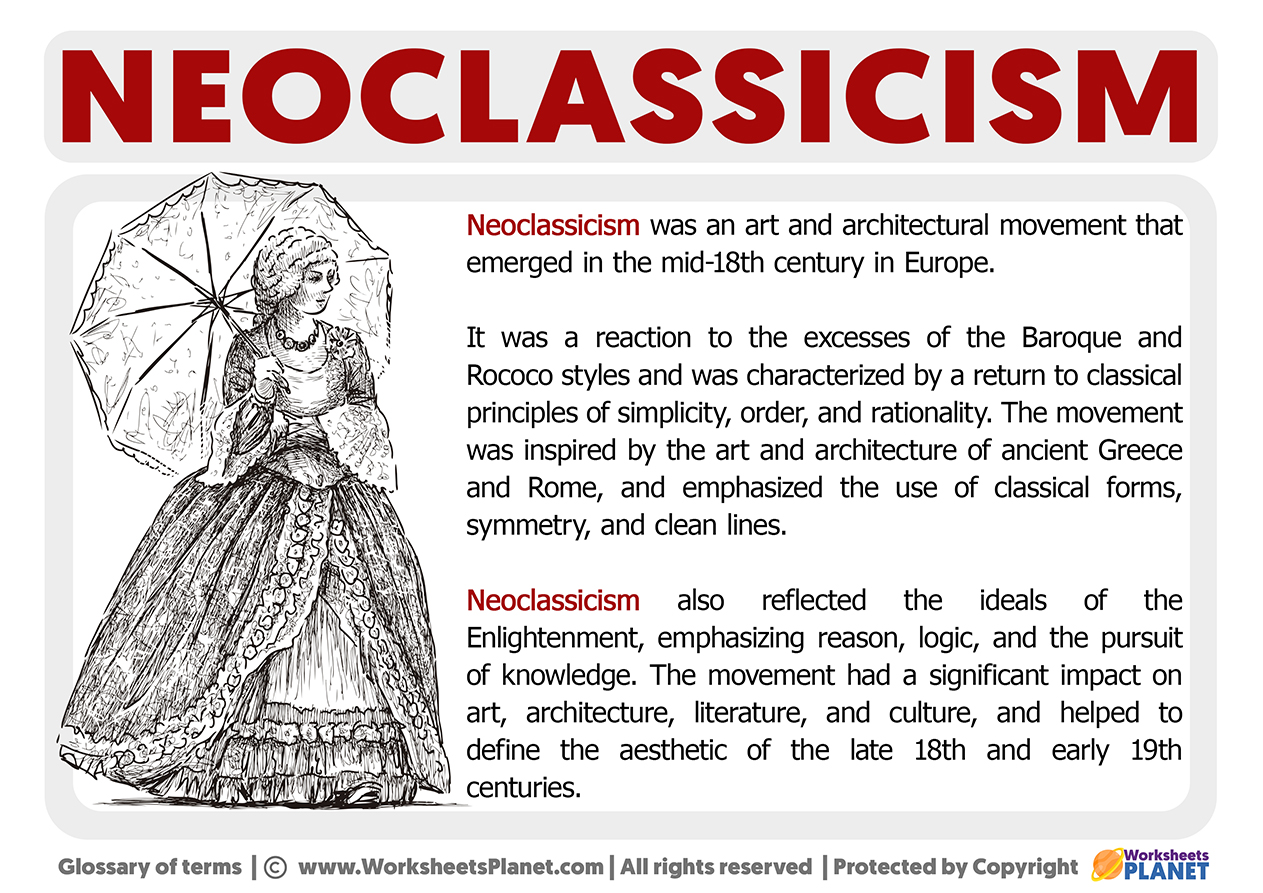Today we bring you the definition of neoclassicism, one of our history’s most influential cultural and artistic movements. In addition to the textual explanation, remember that you have an image with the definition you can download to use in your studies.

Neoclassicism grew in Europe, during the mid-18th century as a response to the vivid Baroque and Rococo styles. It sought to revitalize the classical principles of clarity, harmony, and rationality. The movement drew inspiration from the timeless art and architecture of antique Greece and Rome. It focused on using classical forms, symmetry, and simple lines.
The Neoclassical movement also symbolized the ideals of the Enlightenment era, valuing rationality, logic, and the pursuit of knowledge above all else.
This artistic and cultural movement had a profound impact on a wide range of fields, including art, architecture, literature, and culture as a whole, ultimately shaping the aesthetic of the late 18th and early 19th centuries.

